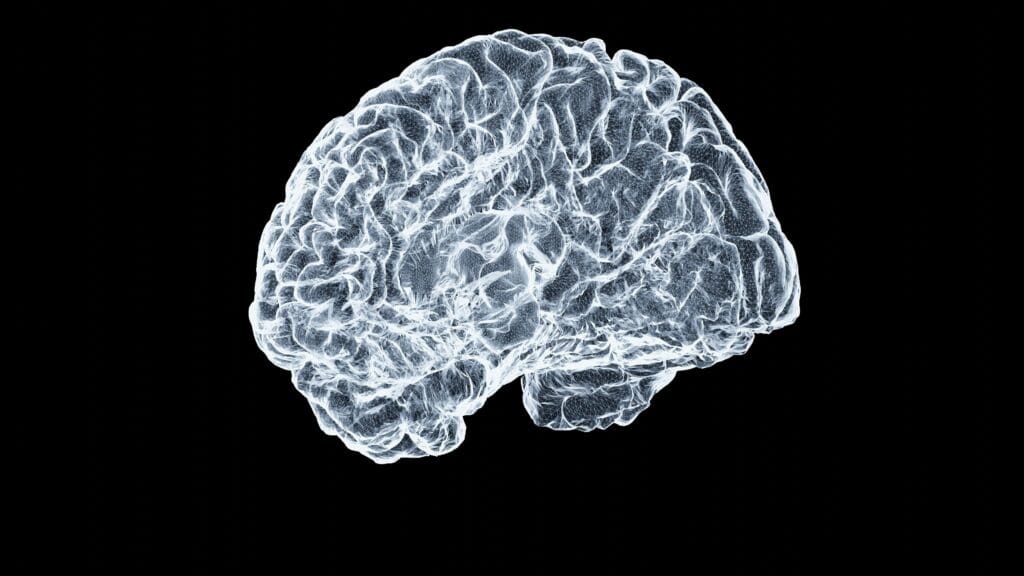1. Origins and Definition of IQ

The meaning of IQ, or Intelligence Quotient, refers to a standardized numerical expression of an individual’s cognitive ability compared to a population average (Sternberg, 2012). The concept originated with Alfred Binet in the early 1900s, who created the first modern intelligence test to identify students needing additional academic assistance (Addagiri, 2025). Binet’s test introduced the idea that intellectual performance could be measured systematically, setting the groundwork for all later intelligence assessments.
Later developments, such as the Stanford–Binet Intelligence Scales and the Wechsler Adult Intelligence Scale (WAIS), refined this approach by dividing intelligence into distinct cognitive domains, including:
- Verbal comprehension – understanding and using language effectively.
- Working memory – the ability to retain and manipulate information temporarily.
- Processing speed – efficiency in performing simple cognitive tasks.
- Perceptual reasoning – solving visual and spatial problems.
Together, these components produce a composite IQ score with a population average of 100, typically ranging from 85 to 115 for most individuals (EBSCO Research Starters, 2023).
The Broader Meaning of IQ Scores
While IQ is commonly used to predict academic and professional performance, it is not an absolute reflection of one’s intelligence or potential (Zimbardo, 2024). Researchers emphasize that intelligence is multifaceted, encompassing creativity, emotional understanding, and adaptability—areas not fully captured by IQ tests (McLeod, 2024).
Alternative assessments, such as Raven’s Progressive Matrices and the Cattell Culture Fair Intelligence Test, attempt to measure reasoning ability without relying on language or cultural background (Polytechnique Insights, 2023). These tests aim to reduce cultural and educational bias, offering a more equitable representation of intellectual capacity.
Key takeaways:
- IQ measures specific cognitive abilities, not total intelligence.
- Average IQ scores center around 100, but variation is expected.
- Nonverbal and culture-fair tests attempt to make IQ measurement more inclusive.
- Human intelligence includes creativity, social insight, and emotional awareness beyond IQ scores.
Understanding the meaning of IQ, therefore, involves recognizing both its scientific value and its limitations as a single measure of intelligence. It is a useful tool for comparing cognitive performance but should be interpreted as one dimension of a broader, more complex human intellect (Duckworth et al., 2011).
2. How IQ Tests Measure Intelligence

IQ tests are designed to measure a range of cognitive abilities that reflect an individual’s overall intellectual performance compared to others in their age group (EBSCO Research Starters, 2023). Rather than assessing knowledge or education, these tests focus on mental processing skills, such as reasoning, problem-solving, memory, and comprehension (Sternberg, 2012).
The most widely used assessments, including the Wechsler Adult Intelligence Scale (WAIS) and the Stanford–Binet Intelligence Scales, consist of multiple subtests. Each subtest measures a specific cognitive domain, and the combined results generate an overall IQ score standardized to a mean of 100 (Zimbardo, 2024).
Core Areas Measured in IQ Tests
To better understand how IQ testing evaluates intelligence, the following table summarizes the key components typically assessed and the skills each represents.
| Cognitive Area | Description | Example Task |
|---|---|---|
| Verbal Comprehension | Measures understanding, vocabulary, and reasoning with words. | Explaining similarities between two concepts. |
| Working Memory | Evaluates the ability to hold and manipulate information in short-term memory. | Repeating numbers backward or solving mental math. |
| Processing Speed | Tests how quickly one can perform basic cognitive operations. | Matching symbols or identifying patterns quickly. |
| Perceptual Reasoning | Assesses spatial and visual problem-solving ability. | Completing patterns or arranging shapes logically. |
| Fluid Intelligence | Focuses on problem-solving and reasoning in novel situations. | Finding relationships among abstract shapes. |
| Crystallized Intelligence | Examines accumulated knowledge and language-based learning. | Answering general knowledge or vocabulary questions. |
(Adapted from Addagiri, 2025; Sternberg, 2012; Zimbardo, 2024.)
Interpreting Test Results
An individual’s overall IQ score reflects performance across these domains, but subtest scores provide a more nuanced understanding of their strengths and weaknesses. For example, someone might excel in verbal comprehension but perform lower in processing speed, indicating a specific cognitive profile rather than a general deficit (Duckworth et al., 2011).
Key points to consider:
- IQ scores are standardized, with an average of 100 and a standard deviation of 15.
- Subtest patterns often reveal more about learning style and reasoning ability than the total score alone.
- IQ results can be influenced by test conditions, motivation, and cultural familiarity (Polytechnique Insights, 2023).
- Intelligence is dynamic—it can develop over time through education, environment, and experience (Haworth et al., 2015).
The Role of Objectivity and Fairness
Researchers continue to refine IQ testing to reduce cultural and socioeconomic bias. Nonverbal tests like Raven’s Progressive Matrices aim to assess reasoning without relying on language, providing a fairer evaluation of individuals from different backgrounds (Polytechnique Insights, 2023). Despite these improvements, experts caution that IQ remains a partial measure of intelligence and should not be viewed as a definitive indicator of one’s intellectual potential (McLeod, 2024).
3. Interpreting IQ Scores: What They Mean and Don’t Mean

Interpreting IQ scores requires understanding how they are distributed across the population. IQ tests are designed to follow a normal distribution, with a mean of 100 and a standard deviation of 15 (Zimbardo, 2024). This means that most individuals—around 68% of the population—score between 85 and 115, which is considered the average range. Scores below or above this range represent cognitive abilities that are respectively below or above average (Sternberg, 2012).
The following table provides a general overview of IQ score ranges and their standard interpretations in psychological research and educational assessment:
| IQ Range | Classification | Interpretation |
|---|---|---|
| 130 and above | Very Superior | Exceptionally high reasoning and problem-solving ability. |
| 120–129 | Superior | Above-average intellectual functioning. |
| 110–119 | High Average | Strong cognitive ability, slightly above the norm. |
| 90–109 | Average | Represents the majority of the population. |
| 80–89 | Low Average | Below-average performance in standardized tests. |
| 70–79 | Borderline | May indicate cognitive challenges; further assessment recommended. |
| Below 70 | Extremely Low | Often used in clinical evaluations for intellectual disability. |
(Adapted from Addagiri, 2025; EBSCO Research Starters, 2023; Zimbardo, 2024.)
What IQ Scores Don’t Tell Us
While IQ tests offer valuable insights into an individual’s cognitive functioning, they do not measure all forms of intelligence (McLeod, 2024). For instance, creativity, emotional understanding, and social adaptability—key components of real-world success—are not captured by traditional IQ assessments (Goleman, 2011).
Furthermore, contextual factors—such as motivation, anxiety, fatigue, and familiarity with testing environments—can temporarily affect IQ scores (Duckworth et al., 2011). Thus, these scores should be interpreted as approximate indicators rather than definitive judgments of one’s intellectual capacity.
Key points to remember:
- IQ scores reflect specific cognitive skills, not total intelligence.
- Motivation and emotional state can influence test results.
- Cultural and educational exposure can shape test performance.
- A single IQ score cannot determine creativity, empathy, or life success.
Misinterpretations and Ethical Concerns
Historically, IQ testing has been misused to support stereotypes and discrimination, particularly when applied without considering socioeconomic and cultural contexts (Polytechnique Insights, 2023). Ethically, psychologists emphasize that IQ tests should be used as one component of a broader assessment framework, not as a sole determinant of intelligence or potential (EBSCO Research Starters, 2023).
Recognizing these nuances helps shift focus away from static numerical labeling toward a more holistic understandingof human intelligence, preparing readers for the following discussion on how culture and environment shape IQ outcomes.
4. Beyond the Numbers: Understanding the Meaning of IQ

The meaning of IQ goes far beyond the number printed on a test result. IQ, or intelligence quotient, is designed to reflect certain aspects of cognitive ability—such as reasoning, memory, and problem-solving—but it does not define a person’s entire intelligence (Sternberg, 2012).
→ IQ scores estimate specific mental functions, not overall intellectual worth.
→ A score of 100 represents the population average, not a fixed measure of intelligence.
→ High or low scores may shift over time based on experience, education, or motivation (Zimbardo, 2024).
Psychologists emphasize that the meaning of IQ lies in its interpretation, not just its numerical value. A single test cannot fully capture the range of human understanding, creativity, or adaptability that defines true intelligence.
The Broader View of Intelligence
To truly understand the meaning of IQ, one must consider broader frameworks of intelligence. Howard Gardner’s theory of multiple intelligences, for instance, identifies several unique domains of human capability—including linguistic, spatial, interpersonal, and musical intelligences (McLeod, 2024).
→ Traditional IQ tests assess only a portion of these domains.
→ Emotional intelligence (EQ), as Goleman (2011) argues, often plays an equal or greater role in life success.
→ Creative and practical skills contribute to how individuals apply knowledge in real situations.
Thus, intelligence should be seen as multifaceted, reflecting the diversity of ways humans solve problems and create meaning. The meaning of IQ becomes richer and more accurate when interpreted alongside these complementary forms of intelligence.
Factors That Shape IQ Scores
IQ is influenced not only by innate ability but also by environmental and social factors. Access to education, nutrition, emotional support, and opportunities for learning all contribute to how cognitive skills develop over time (Duckworth et al., 2011).
→ Early learning experiences can enhance problem-solving and reasoning.
→ Stress or lack of resources can suppress test performance.
→ Cultural familiarity with testing content affects comprehension and confidence.
Recognizing these factors deepens our understanding of the meaning of IQ as a dynamic measure—something that evolves with context, not a static representation of ability.
Reframing How Society Views IQ
Society often overemphasizes IQ scores, treating them as indicators of potential or personal value. This misinterpretation distorts the true meaning of IQ, leading to stereotypes about intelligence and worth.
→ A high IQ does not guarantee creativity, empathy, or wisdom.
→ A lower IQ does not define a person’s potential for success or innovation.
→ Real-world achievements depend on persistence, curiosity, and emotional understanding (Goleman, 2011).
By moving beyond numerical rankings, educators and psychologists can foster a more inclusive and empowering view of intelligence—one that values diverse forms of thinking and learning equally.
Key Takeaways
→ The meaning of IQ extends beyond numerical scores or categories.
→ True intelligence includes creativity, adaptability, and emotional understanding.
→ Environmental and cultural factors strongly shape IQ results.
→ IQ should be seen as a tool for understanding, not a label of ability.
5. The Impact of Technology and Changing Work Environments

As technology rapidly reshapes how people learn, work, and interact, the meaning of IQ continues to evolve. Traditional intelligence tests were designed to measure logical reasoning, memory, and problem-solving—skills crucial in industrial and academic contexts (Sternberg, 2012). However, in today’s digital economy, intelligence encompasses a broader set of abilities, including adaptability, technological literacy, and emotional understanding.
In workplaces driven by automation and innovation, success increasingly depends on how individuals learn new systems, collaborate virtually, and apply knowledge creatively. Thus, the meaning of IQ must now include the capacity to adapt, not just to reason.
IQ and Modern Workplace Competencies
The 21st-century workplace demands a mix of cognitive, emotional, and digital intelligence. While IQ remains relevant in predicting analytical performance, it cannot fully capture the range of skills required for success in technology-driven environments (Brynjolfsson & McAfee, 2014).
Professionals who thrive today often possess high adaptive intelligence—the ability to learn new technologies and integrate them effectively (Neisser et al., 1996). They also rely on emotional intelligence to communicate across teams and cultures, skills that traditional IQ assessments overlook (Goleman, 2011).
Comparing Traditional and Modern Intelligence Indicators
The table below contrasts how the meaning of IQ has shifted from traditional interpretations to modern applications in technology-enhanced contexts.
| Aspect of Intelligence | Traditional View of IQ | Modern View (Technology-Driven Context) | Emerging Skills Needed |
|---|---|---|---|
| Cognitive Focus | Logical reasoning, pattern recognition, problem-solving (Sternberg, 2012). | Integrative thinking, digital comprehension, adaptive problem-solving. | Data analysis, critical digital literacy, computational reasoning. |
| Workplace Application | Success in structured, predictable roles (Neisser et al., 1996). | Success in fluid, innovative, and collaborative environments. | Cross-functional collaboration, creativity, and adaptability. |
| Learning and Development | Fixed measure of ability and potential. | Dynamic and continually shaped by exposure to new technologies. | Lifelong learning, self-regulation, openness to change. |
| Social and Emotional Aspects | Often excluded from IQ evaluations. | Recognized as essential to teamwork and leadership (Goleman, 2011). | Emotional intelligence, empathy, global communication. |
How Technology Shapes Cognitive Development
The digital landscape not only transforms job requirements but also influences how cognitive abilities develop. Access to online learning platforms, simulations, and artificial intelligence tools enhances analytical skills but may also reduce deep-focus capacities due to constant digital stimulation (Carr, 2020).
Moreover, digital inequality can influence how IQ manifests across populations. Those with greater access to technology may develop more advanced problem-solving and multitasking skills, while others face barriers to cognitive enrichment. Thus, the meaning of IQ today also reflects digital access and learning opportunities, not just natural aptitude.
A Broader Understanding of Intelligence
Ultimately, technology challenges society to redefine intelligence beyond what IQ tests measure. The meaning of IQ now incorporates how individuals apply reasoning in real-world, digital contexts—balancing cognitive precision with emotional adaptability and ethical awareness. As automation grows, the human capacity for creativity, empathy, and innovation becomes more valuable than ever (Brynjolfsson & McAfee, 2014).
Key Takeaways
• Technology highlights new disparities, emphasizing the need for equitable access to cognitive development tools.
• The meaning of IQ is expanding in the digital age to include adaptability, creativity, and digital literacy.
• Traditional IQ measures remain useful but must be interpreted alongside emotional and technological competencies.
• Success in modern work environments depends on continuous learning and collaborative intelligence.
6. Alternative Measures of Intelligence

For decades, psychologists and educators have debated whether IQ alone can represent the full spectrum of human intelligence. Traditionally, IQ tests have been used to measure logical reasoning, memory, and verbal comprehension—skills that correlate with academic performance (Sternberg, 1985). However, intelligence encompasses far more than what standardized testing can capture. The meaning of IQ becomes limited when it is treated as a single measure of potential rather than part of a broader, more dynamic system of human abilities.
Emotional Intelligence
One of the most widely recognized alternatives to traditional IQ is emotional intelligence (EQ). Introduced by Daniel Goleman (1995), EQ refers to the ability to recognize and regulate one’s emotions while understanding and responding appropriately to others. Unlike IQ, which emphasizes cognitive reasoning, EQ focuses on empathy, social awareness, and emotional management. Research shows that individuals with high EQ often excel in leadership, teamwork, and conflict resolution—skills essential in both academic and workplace settings (Goleman, 2011).
While IQ may predict how well someone performs on problem-solving tasks, EQ predicts how effectively they manage relationships and navigate complex social environments. Together, these forms of intelligence paint a more complete picture of human capability.
Creative and Practical Intelligence
Robert Sternberg’s Triarchic Theory of Intelligence (1985) expanded the concept of intelligence to include not just analytical ability (as measured by IQ) but also creative and practical intelligence.
- Creative intelligence involves generating new ideas, imagining possibilities, and approaching problems in innovative ways.
- Practical intelligence involves applying knowledge to real-world contexts—essentially, knowing how to adapt and make effective decisions in everyday life.
These dimensions highlight the importance of flexibility and real-world application, areas where traditional IQ assessments often fall short. A student, for example, might not test high on analytical reasoning but could demonstrate remarkable problem-solving in hands-on or unfamiliar situations.
Multiple Intelligences
Howard Gardner’s Theory of Multiple Intelligences (1983) further broadened the understanding of human intellectual potential. Gardner identified at least eight distinct types of intelligence, including linguistic, logical-mathematical, musical, bodily-kinesthetic, spatial, interpersonal, intrapersonal, and naturalistic intelligences.
This model emphasizes that individuals possess different combinations of strengths rather than a single, measurable cognitive ability. For instance, a musician may demonstrate exceptional rhythmic and auditory intelligence, while an athlete may excel through bodily-kinesthetic intelligence. This approach reframes how society interprets the meaning of IQ, shifting focus from narrow testing to recognizing diverse forms of talent and learning.
Cultural and Contextual Intelligence
Another growing area of research focuses on cultural and contextual intelligence, which refers to the ability to function effectively across different cultural or situational settings (Earley & Ang, 2003). In an increasingly globalized world, this type of intelligence is vital. It reflects an awareness of social norms, communication styles, and cultural values—skills that are often overlooked by conventional IQ tests but are crucial for international collaboration and intercultural competence.
A Holistic Approach to Measuring Intelligence
Collectively, these alternative frameworks suggest that intelligence cannot be reduced to a single score. Emotional, creative, practical, and cultural intelligences reveal that human ability is complex, adaptive, and deeply influenced by experience and environment. The meaning of IQ, then, is best understood as one component of a broader mosaic of human potential rather than a final judgment of capacity.
A more holistic assessment of intelligence should integrate both cognitive and non-cognitive skills, recognizing that success and adaptability depend as much on creativity, empathy, and self-regulation as on reasoning and memory.
Conclusion: Rethinking Intelligence Measurement

The meaning of IQ has transformed over the past century, reflecting shifts in how intelligence is understood and measured. While traditional IQ tests—such as the Stanford-Binet and Wechsler scales—have long provided valuable insight into cognitive performance, they capture only a fraction of what it means to be intelligent. Human intelligence extends far beyond analytical reasoning to include creativity, emotional understanding, and adaptability—dimensions that a single number cannot fully express (Gardner, 1983; Sternberg, 2020).
→ Over time, scholars have emphasized that IQ scores must be interpreted within their cultural and environmental contexts. Factors such as education, socioeconomic status, and opportunity profoundly shape test outcomes (Neisser et al., 1996). Recognizing this complexity helps prevent the misuse of IQ scores as definitive measures of human worth or potential.
→ Meanwhile, alternative tests—like the Torrance Tests of Creative Thinking, Raven’s Progressive Matrices, and Mayer-Salovey-Caruso Emotional Intelligence Test (MSCEIT)—illustrate how intelligence can manifest in multiple forms (Raven, 2000; Mayer, Salovey, & Caruso, 2002). These models highlight creativity, emotion, and problem-solving as equally vital dimensions of intellect.
By embracing a broader understanding of intelligence, we can cultivate educational and social systems that value diverse forms of cognitive expression. The meaning of IQ, therefore, continues to evolve—not as a fixed measure, but as a reflection of humanity’s ever-deepening understanding of the mind.
Table: Expanding the Meaning of IQ
| Traditional View of IQ | Evolving and Inclusive Understanding of Intelligence |
|---|---|
| Focuses on logical reasoning and problem-solving | Encompasses creativity, emotion, and adaptability |
| Measured primarily through standardized tests (e.g., Stanford-Binet, WAIS) | Includes alternative measures (e.g., Raven’s Matrices, MSCEIT, TTCT) |
| Emphasizes analytical and linguistic abilities | Recognizes multiple intelligences (Gardner, 1983) |
| Often culturally and linguistically biased | Seeks to reduce bias and include diverse populations |
| Views intelligence as static | Understands intelligence as dynamic and shaped by experience |
Key Takeaways
→ The meaning of IQ extends beyond a numerical score to include diverse cognitive abilities.
→ Cultural and socioeconomic factors significantly influence IQ outcomes.
→ Alternative assessments highlight creativity and emotional intelligence as vital forms of cognition.
→ Rethinking IQ supports a more equitable and inclusive understanding of human potential.
References
Addagiri, V. K. (2025). The looking glass for intelligence quotient tests: The interplay of IQ and cognitive validity. National Library of Medicine (PMC). https://pmc.ncbi.nlm.nih.gov/articles/PMC6927908/
Adeyemi, T. O., & Olatunji, O. A. (2020). Academic performance and intelligence quotient of primary school pupils in Nigeria. National Library of Medicine (PMC). https://pmc.ncbi.nlm.nih.gov/articles/PMC7422740/
Duckworth, A. L., Quinn, P. D., Lynam, D. R., Loeber, R., & Stouthamer-Loeber, M. (2011). Role of test motivation in intelligence testing. Proceedings of the National Academy of Sciences, 108(19), 7716–7720. https://pmc.ncbi.nlm.nih.gov/articles/PMC3093513/
Sternberg, R. J. (2012). Intelligence. National Library of Medicine (PMC). https://pmc.ncbi.nlm.nih.gov/articles/PMC3341646/
Zimbardo, P. (2024). Intelligence Quotient (IQ): Psychology definition, history & examples. Zimbardo Psychology Resources. https://www.zimbardo.com/intelligence-quotient-iq-psychology-definition-history-examples/
CambriLearn. (2023). Understanding the different types of intelligence: IQ, EQ, SQ, and AQ. https://cambrilearn.com/blog/understanding-types-intelligence-iq-eq-sq-aq
McLeod, S. (2024). Gardner’s theory of multiple intelligences. Simply Psychology. https://www.simplypsychology.org/multiple-intelligences.html
Kidd, J., et al. (2023). Theories of multiple intelligences and emotional intelligence. LibreTexts Social Science Library. https://socialsci.libretexts.org/Bookshelves/Education_and_Professional_Development/Foundations_of_Education_and_Instructional_Assessment_(Kidd_et_al.)/10%3A_Effective_Teaching/10.04%3A_What_are_the_theories_of_multiple_intelligences_and_emotional_intelligence
Polytechnique Insights. (2023). IQ: Can intelligence really be measured? https://www.polytechnique-insights.com/en/columns/neuroscience/iq-can-intelligence-really-be-measured/
Gur, R. C., & Gur, R. E. (2011). Why IQ scores are volatile indices of global functional outcome: Neurocognitive evidence. National Library of Medicine (PMC). https://pmc.ncbi.nlm.nih.gov/articles/PMC3075072/
Haworth, C. M. A., et al. (2015). The nature and nurture of high IQ: An extended sensitive period for intellectual development. National Library of Medicine (PMC). https://pmc.ncbi.nlm.nih.gov/articles/PMC4511162/
Chan, D. W. (2013). Correlations of multiple intelligences and emotional intelligence: A closer analysis of theoretical assumptions. ResearchGate. https://www.researchgate.net/publication/259827111_Correlations_of_multiple_intelligences_and_emotional_intelligence_A_closer_analysis_of_theoretical_assumptions
Edutopia. (2024). Multiple intelligences theory: Widely used, yet misunderstood. https://www.edutopia.org/article/multiple-intelligences-theory-widely-used-yet-misunderstood/
EBSCO Research Starters. (2023). Intelligence quotient (IQ) and measuring intelligence. https://www.ebsco.com/research-starters/health-and-medicine/intelligence-quotient-iq-and-measuring-intelligence
Snell, K. (2024). What is IQ—and how much does it matter? Science News Explores. https://www.snexplores.org/article/what-iq-and-how-much-does-it-matter
